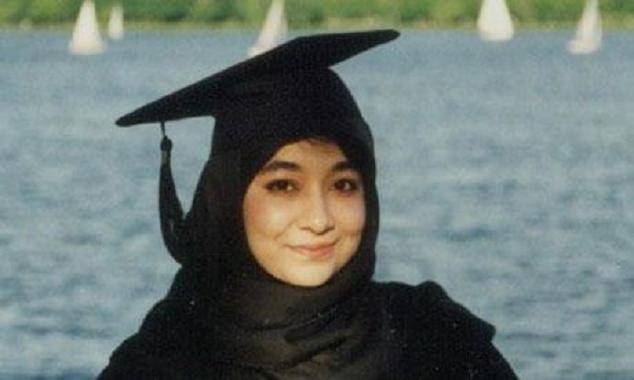The ‘enlightened’ opinion on Pakistan’s struggles during the last six decades points at a conflict between secular forces (political or military) versus conservative religious forces. Eminent historian, Dr. Farzana Shaikh dismissed this notion in a recent lecture at Lahore University of Management Sciences. She was of the view that the Pakistan movement and Pakistan’s trajectory since inception can be described as a competition between different interpretations of religion and the disagreement about implementation. In her view, there is no secular versus theocratic or modern versus fundamentalist competition. In situations like these when religion plays a crucial role in body politic, efforts to soften or de-radicalise the teachings are sought by interested parties. Dr. Shaikh wrote in her paper titled “Will Sufi Islam Save Pakistan” that ‘The question of empowering some versions of Islam over others as right for Pakistan goes back to the inception of the state, when rival versions of Islam jockeyed for official patronage. It set in motion a debate, which resonates to the present day, suggesting that, ultimately, the survival of Pakistan depends upon empowering the right kind of Islam.’
All India Muslim League had to take Barelvi and certain Deobandi Ulema on board, Ayub Khan’s convention Muslim League sought help from rural Pirs to promote an alternative interpretation of Islam based on a reformed and modernized Sufi Islam, Zulfikar Ali Bhutto’s PPP embraced popular Sufi saints to project a modern vision of Pakistan and had men like Maulana Kausar Niazi in its ranks. Dictator Zia strengthened the hold of the Ulema but continued with earlier state policies, which ensured the preservation of holy shrines. During the 1990s, Benazir Bhutto rejuvenated the cult of Lal Shehbaz Qalandar—cultivated initially by her father—and warmly endorsed public celebrations at holy shrines across the country. Dictator Musharraf promoted ‘Enlightened Moderation’ and created a ‘National Council for the Promotion of Sufism’. In more recent times, PPP and PML (N) had alliances with sectarian organisations during elections while PTI leaders used religious rhetoric and posturing to establish their credentials.
This issue has been debated at length in policy think tanks around the world, particularly after 9/11. In 2003 the Rand Corporation, a right-wing U.S. policy group, in a broader report on the Muslim world had also highlighted the role of Sufi s as valuable partners for America to help forge a “modern, democratic Islam.” Rand revisited the issue in 2007 when it cast Sufi s as the West’s “natural allies” in the war against radical Islam. In its report published in April 2010, Washington-based World Organization for Resource Development and Education (WORDE) advocated strengthening Pakistan’s main Islamic network, the mainstream Barelvi Ahl-e Sunnat al-Jama‘at, which favours the authority of Sufi Pirs (spiritual masters), in order to defeat radical Islam and promote U.S. foreign policy goals.
On a macro-level, the political parties adjusted their policies to appeal to a wider populace. On a smaller level, organisations have undergone similar changes over the years. One peculiar case in this regard is the Young Doctors Association (YDA) based in Punjab. Formed in 2006 in response to maltreatment of doctors at hands of Patients’ attendants in government hospitals of Punjab, this organisation of ‘educated professionals’ claimed to represent the young doctors of Punjab. In the early years, YDA engaged in public protests to demand improved pay-scale and a proper service structure for doctors. During the agitation process, there were clashes with the government resulting in forced closure of emergency departments and province-wide strikes in all public sector hospitals. Many activists were arrested and kept in prison cells. Following a prolonged movement, the Punjab government agreed to a deal with the YDA on mutually agreed terms in 2012.
The deal with government caused a stagnancy in the ranks of YDA and its leaders starting losing sympathies of the cadre. There emerged two strains of people within the association: the religious strain and the leftist-activist strain. As has been the case with most popular parties in Pakistan, the religious strain gained the upper hand in party matters and YDA started organising religious events, including a walk to demand release of Dr. Aafia Siddiqui. An essentially secular ‘professional’ association was thus converted into a religiously-oriented propaganda machine. This descent took less than three years in making.
The strongest institution in the country (Military) is itself struggling with effects of religiosity within the ranks. Many renegades—who were no doubt inspired by religious anecdotes—have joined the ranks of terrorists over the years. Articles written by retired and serving military personnel in national newspapers as well as military’s own publications (Hilal, Annual Green Books) demonstrate the damage to logical thinking done by propaganda waged by right-wing forces in the country. It is a competition between soft and hard narratives and only time can differentiate the victor from the loser.
Saturday, April 20, 2024
Competing Narratives

The writer is a freelance columnist. Follow him on Twitter
Pak economy improving, funds will be provided on request: IMF
9:57 PM | April 19, 2024
Minister advocates for IT growth with public-private collaboration
9:57 PM | April 19, 2024
Judges' letter: IHC seeks suggestions from all judges
9:55 PM | April 19, 2024
Formula 1 returns to China for Round 5
9:05 PM | April 19, 2024
Germany head coach Julian Nagelsmann extends contract till 2026 World Cup
9:00 PM | April 19, 2024
A Tense Neighbourhood
April 19, 2024
Dubai Underwater
April 19, 2024
X Debate Continues
April 19, 2024
Hepatitis Challenge
April 18, 2024
IMF Predictions
April 18, 2024
Kite tragedy
April 19, 2024
Discipline dilemma
April 19, 2024
Urgent plea
April 19, 2024
Justice denied
April 18, 2024
AI dilemmas unveiled
April 18, 2024
ePaper - Nawaiwaqt
Advertisement
Nawaiwaqt Group | Copyright © 2024





